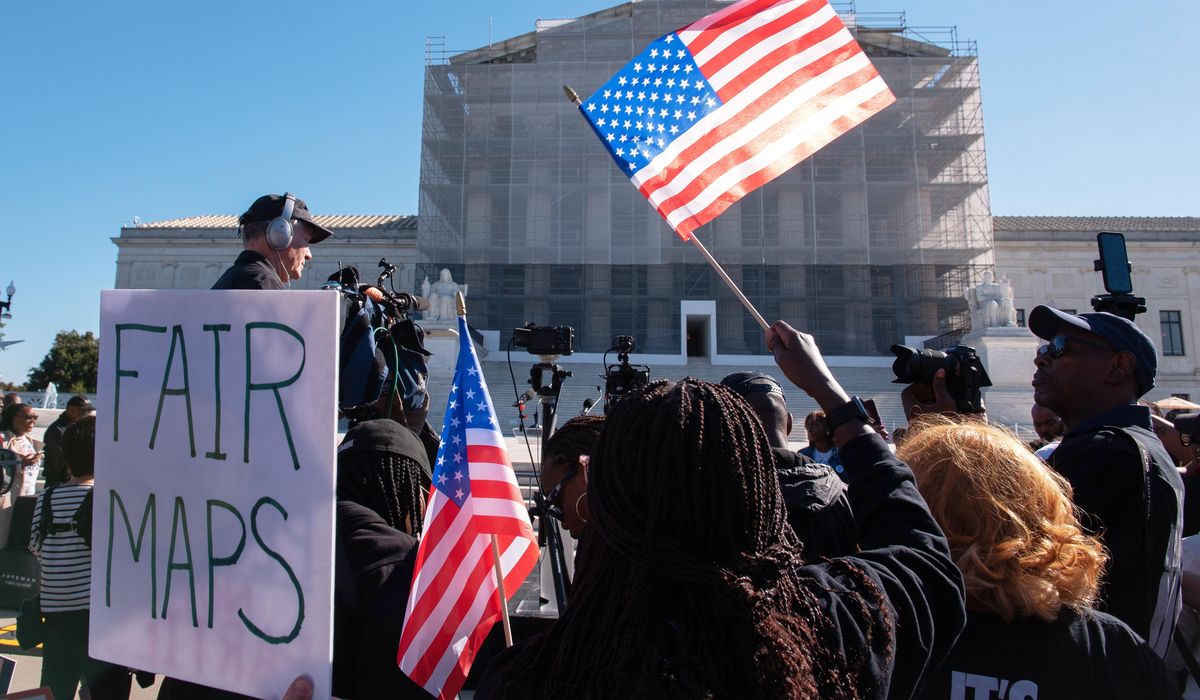


The Supreme Court plowed into the thorniest of political issues Wednesday as the justices sought to sort out how much — if at all — states and judges can use race when they address discrimination in how congressional and state legislative district maps were drawn.
The court’s conservative-leaning majority was troubled by the way race has come to dominate some redistricting court battles and seemed prepared to redraw a part of the 1965 Voting Rights Act that has come to be seen as a prod for legislatures to seek ways to create majority-minority districts.
At issue is Louisiana’s attempt to draw its six U.S. House districts, with court orders that mandated it add a second majority-Black seat to accommodate the state’s high Black population.
To opponents, that was a crass — and likely unconstitutional — attempt to reduce voters to their race.
“The Constitution does not tolerate this system of government-mandated racial balancing,” Benjamin Aguinaga, Louisiana’s solicitor general, told the high court.
But Janai Nelson, a lawyer at the National Association for the Advancement of Colored People who defended the map with two Black districts, said if the high court blocks use of race to draw maps to correct discrimination, it would be “a staggering” upheaval of the current system.
“This is about race,” Ms. Nelson said. “Section 2 of the Voting Rights Act laser-focused on eliminating racial discrimination from our electoral process regardless of party.”
She warned any reversal would “throw maps across the states into chaos.”
The complicated case deeply divided the justices flirting with walking back Section 2.
Justice Neil M. Gorsuch, a Trump appointee, pointedly questioned Ms. Nelson on how it could be “sometimes acceptable for a federal district court to order a map that intentionally discriminates on the basis of race.”
And Justice Brett M. Kavanaugh, another Trump appointee, wondered whether Section 2 had outlived its use — or, if not, when it would.
“This court’s cases, in a variety of contexts, have said that race-based remedies are permissible for a period of time … but that they should not be indefinite and should have an end point,” he told Ms. Nelson.
But the court’s Democratic appointees vehemently defended the law and how it’s being used, saying race must be part of a remedy to fix discrimination against Black voters.
“They’re so tied up with race because that’s the initial problem. That’s the beginning,” said Justice Ketanji Brown Jackson, a Biden appointee.
Louisiana’s Legislature initially drew a map intended to give Republicans five of the state’s six seats, with the sixth, where a majority of voters were Black, electing a Democrat.
Black voters challenged that map, arguing that as 33% of the state’s population, they should have two districts where they were a majority of the population.
Under court prodding, the Legislature delivered the new map with two Black-heavy districts ahead of the 2024 election. Democrats won both of those seats, reducing the GOP to a 4-2 margin in the state’s delegation.
Hashim Mooppan, the deputy U.S. solicitor general arguing for the Trump administration in the case, compared the situation to a mostly White state where a GOP-controlled legislature drew the congressional lines to heavily favor Republicans.
He said no court would order the state to redraw the map to accommodate the White Democrats.
“What you can’t have is merely just showing that a Republican legislature favored Republicans, whether or not they’re White or Black,” Mr. Mooppan said. “There’s no reason to think the Louisiana Legislature would have done anything different in this case if every Black Democrat was a White Democrat.”
Justice Sonia Sotomayor was appalled at that idea.
“That means Blacks never have a chance, no matter what their number is, unless they reach more than 51%,” she said.
Ms. Nelson said Section 2 has been the major reason for the advancement of Black voters’ political interests in the South. She said undoing that would amount to a “staggering reversal.”
She said every Black lawmaker in the region has come from a majority-Black district.
“White Democrats were not voting for Black candidates, whether they were Democrats or not. We know there is such a significant chasm between how Black candidates and White voters vote in Louisiana,” she said. “Race is the driving factor.”
Mr. Mooppan, though, said there are more than 60 Black members of the House right now and only 15 majority-Black districts nationwide, so Black lawmakers are winning in many areas of the country without those districts.
The case came to the justices several years after the high court ruled on Alabama’s congressional map, which also had only a single majority-Black district for a state with a high Black population.
In that 2023 ruling, the justices, divided 5-4, specifically rejected the kind of “race-neutral” approach Louisiana is now arguing for.
Louisiana itself was before the court in its last term over the same issue, but the justices in June put off a ruling and set the case for new arguments in this new term. The justices indicated they wanted to deal squarely with the big constitutional questions.
The case is Louisiana v. Callais. Phillip Callais is the lead challenger to the map.
• Stephen Dinan can be reached at sdinan@washingtontimes.com.
• Alex Swoyer can be reached at aswoyer@washingtontimes.com.
